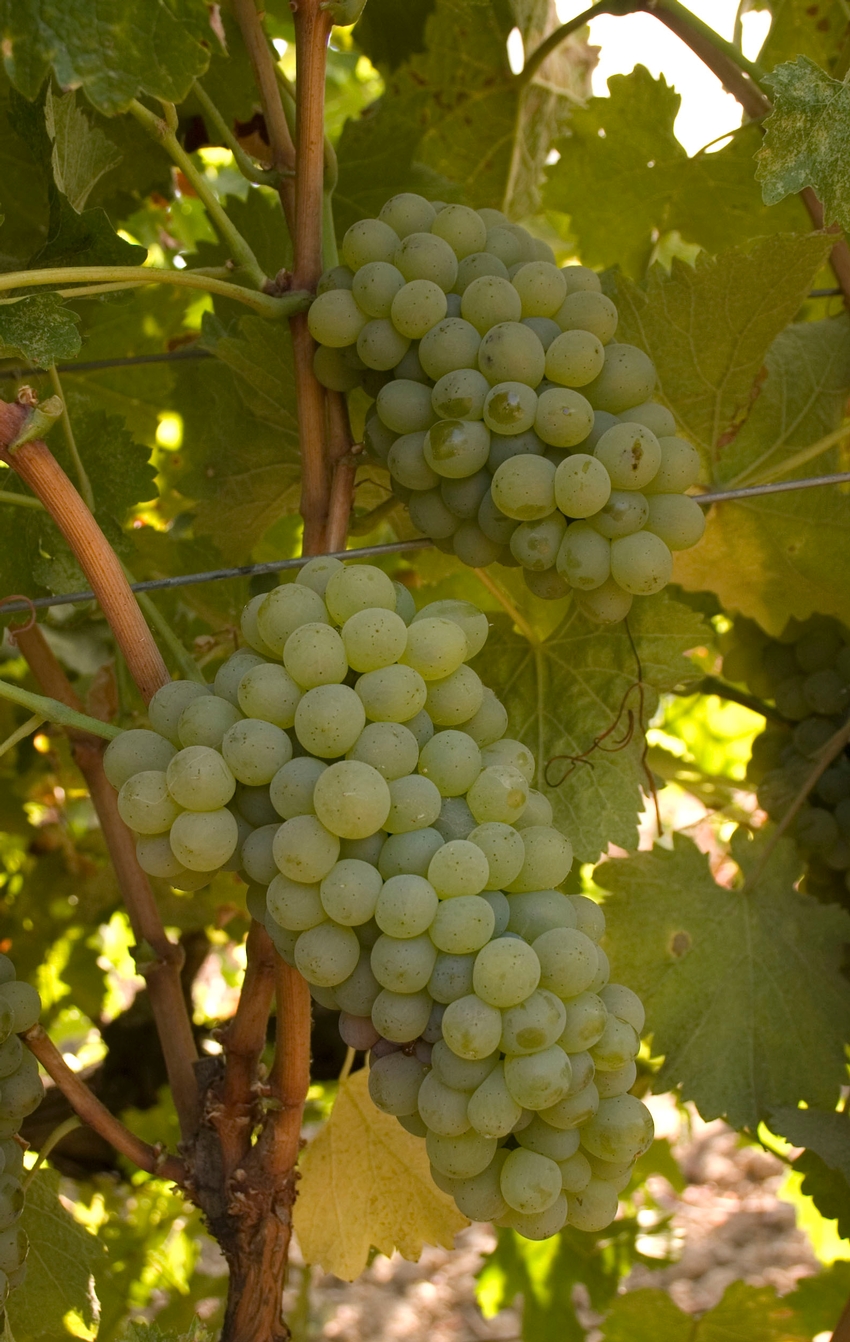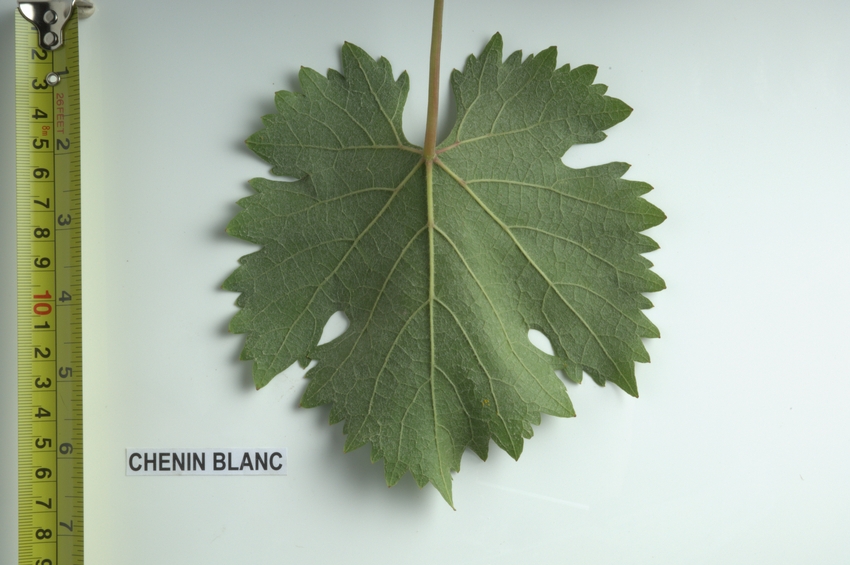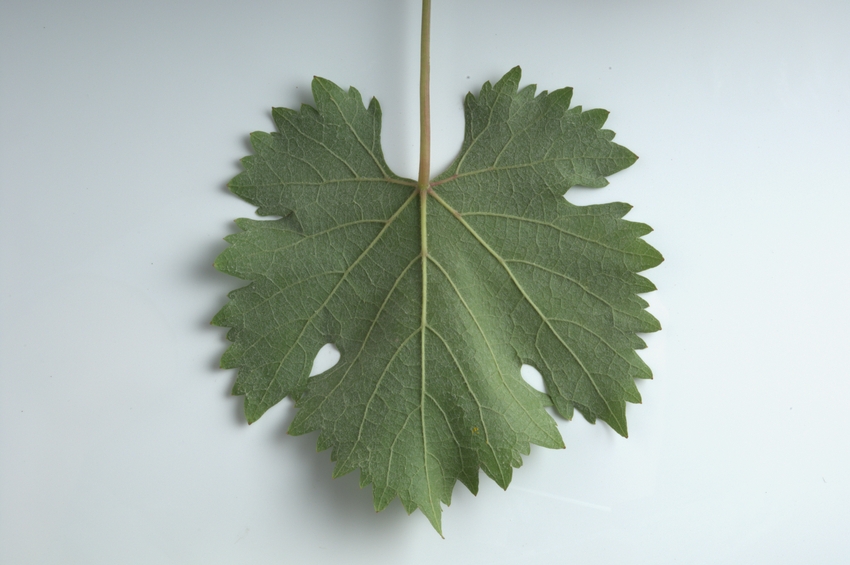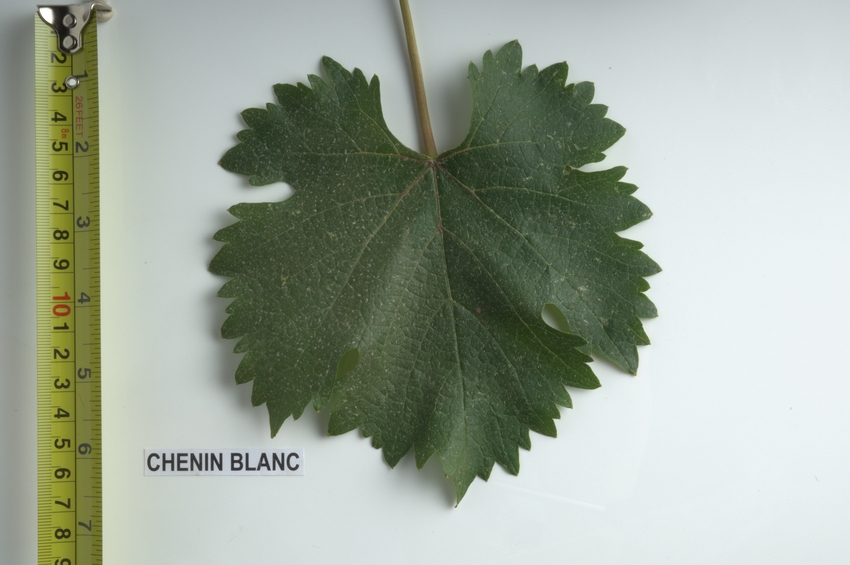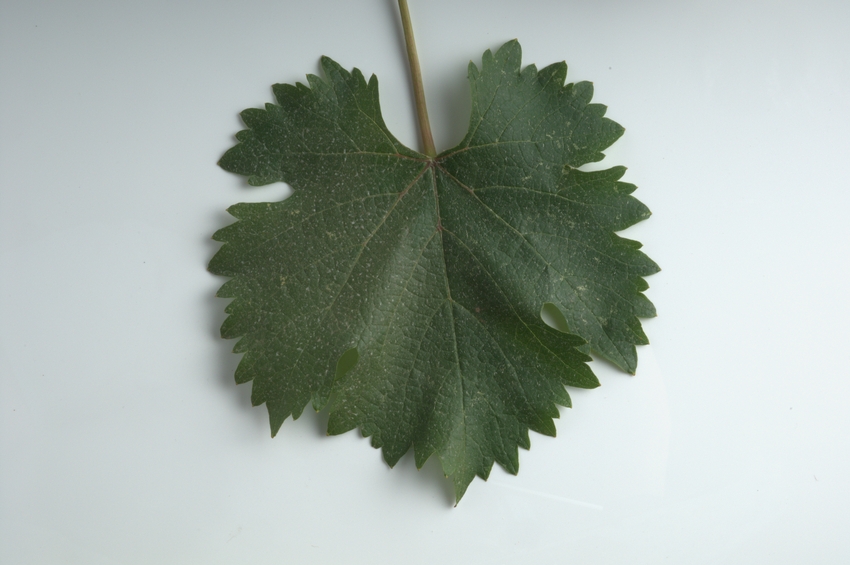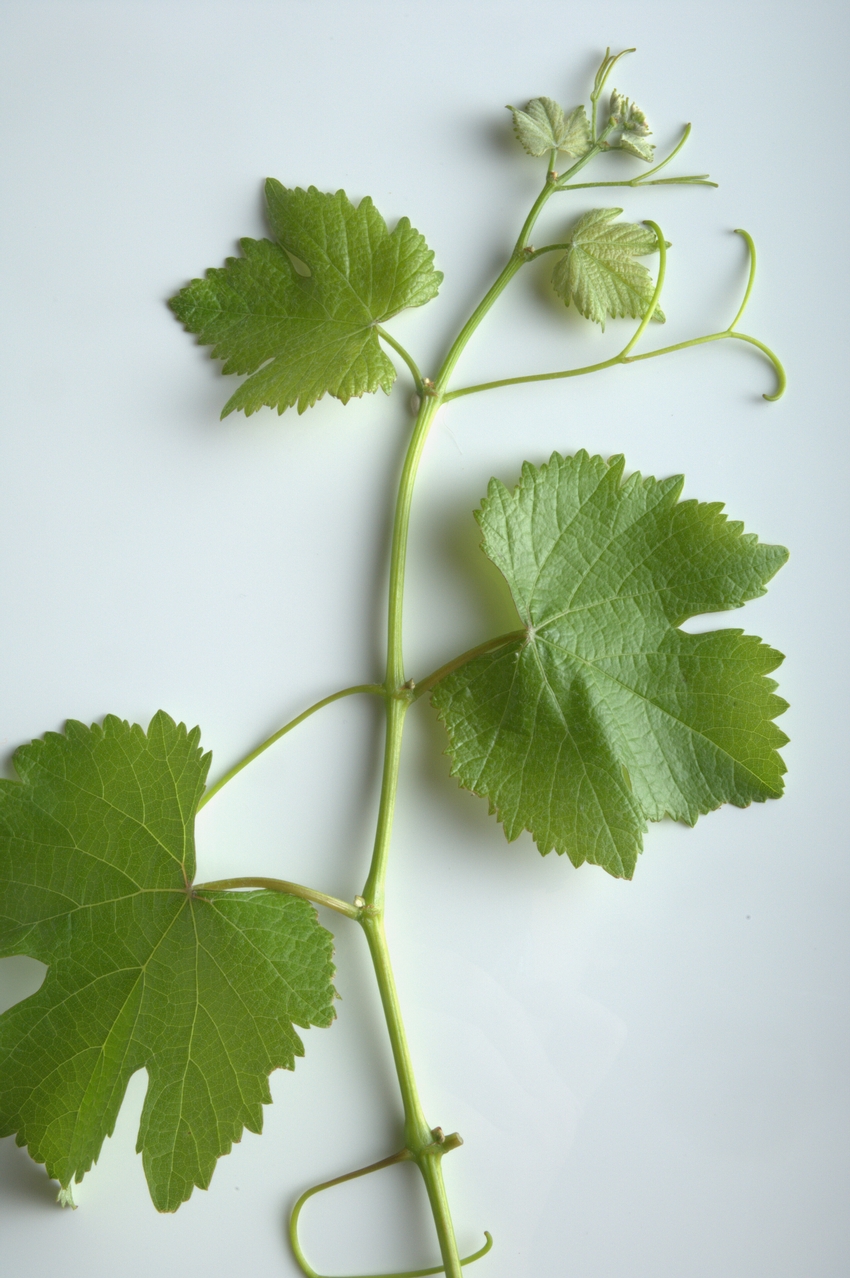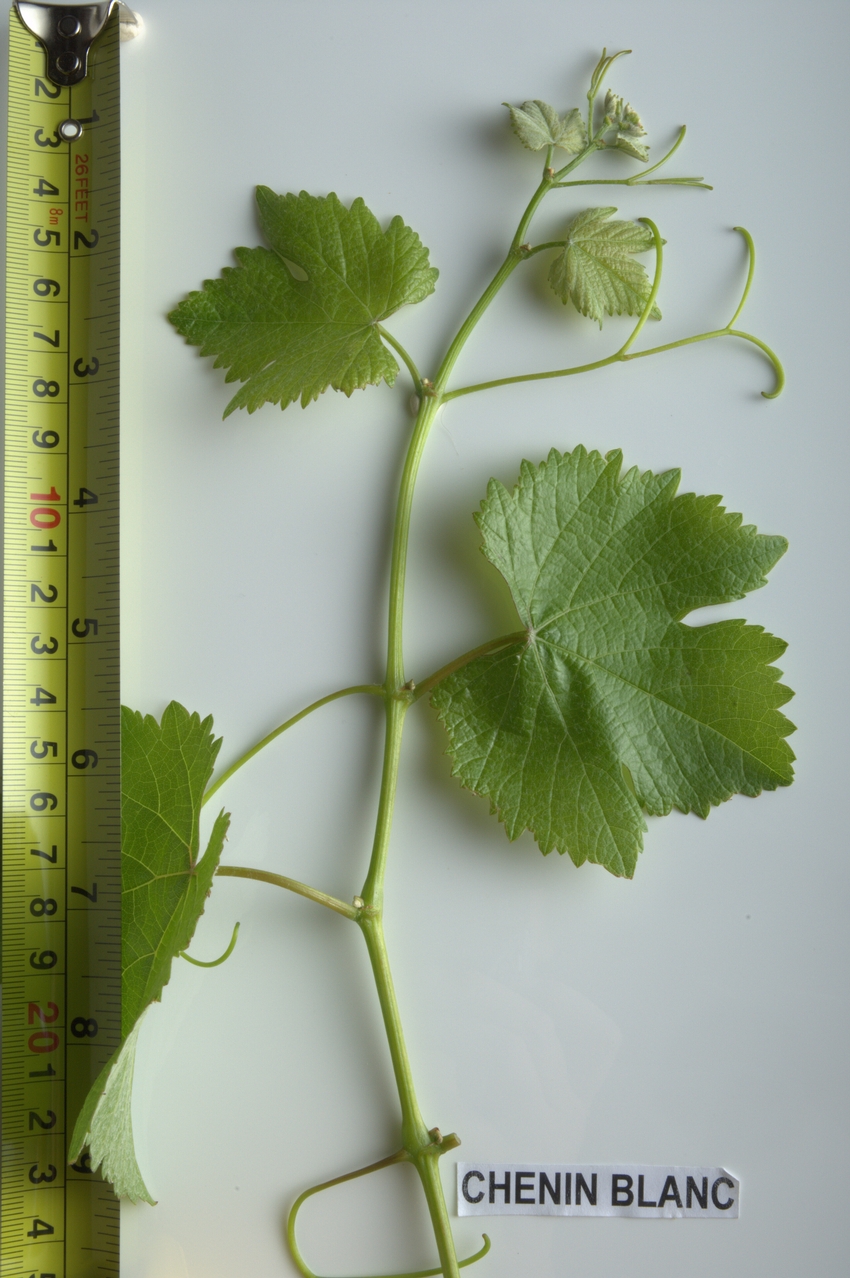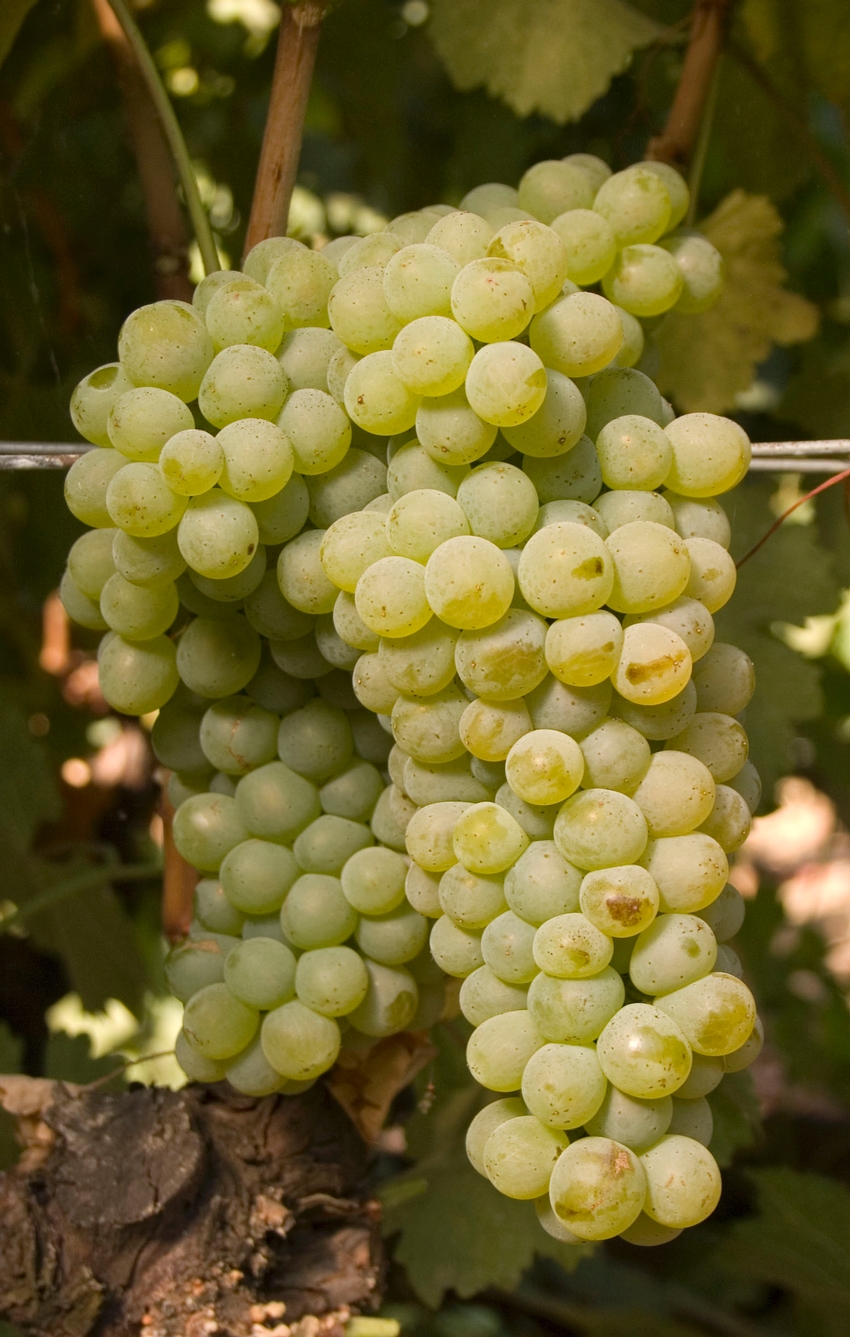Grape Variety: Chenin blanc
| Variety Name |
Chenin blanc |
| TTB Approved Name(s) |
Chenin blanc |
| All Synonyms |
Anjou, Blanc d'Aunis, Capbreton blanc, Confort, Coue Fort, Cruchinet, Cugnette, Feher Chenin, Franc blanc, Franche, Gout Fort, Luarskoe, Pineau, Pineau d' Anjou, Pineau de Briollay, Pineau de la Loire, Pineau de Savennieres, Pineau gros, Pineau gros de Vouvray, Pineau Nantais,Plant de Breze, Plant de Salces, Plant de Salles, Plant du Clair de Lune, Quefort, Rajoulin, Rouchalin, Rougelin, Steen, Stein, Tete de Crabe, Vaalblaar Stein, Verdurant |
| Countries of Origin |
France |
| Species |
Vitis vinifera
|
| Pedigree |
6-DNA analysis in 1999 (in Austria) suggests possible parent/progeny relationship with Sauvignon blanc; see reference 70 for parentage Sauvignon x Rot Traminer |
| References |
- Christensen, L et al. 2003. Wine Grape Varieties in California. University of California Agriculture and Natural Resources Publication 3419.
- ENTAV. Catalogue of Selected Wine Grape Varieties and Clones Cultivated in France.1995. Ministry of Agriculture, Fisheries and Food CTPS. France.
- Robinson, J. 2006. The Oxford Companion to Wine. Third edition. Oxford University Press.
- Vitis International Variety Catalogue (VIVC). Federal Centre for Breeding Research on Cultivated Plants (BAZ).
Institute for Grapevine Breeding Geilweilerhof (IRZ). August, 2007. Link
The former National Grape Registry (NGR) was initially compiled and annotated using the earlier version of the Vitis database. The VIVC underwent a significant update beginning in 2007. Corresponding updates to this Registry will be made as necessary.
- Alcohol and Tobacco Tax and Trade Bureau (TTB). Code of Federal Regulations Title 27 Part 4.91 List of approved prime names. Link
- Cipriani et al. 2010. The SSR-based molecular profile of 1005 grapevine (Vitis vinifera L.) accessions uncovers new synonymy and parentages, and reveals a large admixture amongst varieties of different geographic origin. Theor Appl Genet 121: 1569-1585.
|
| Berry Color |
White |
| Uses |
Wine |
Chenin blanc PhotosClick photo to enlarge
Chenin blanc Selections
How Selection Numbers are Created
Questions are often asked as to how Foundation Plant Services (FPS) decides which number to assign to the grape selections in the foundation vineyard and whether those numbers relate to particular clones that may be the sources of the FPS selections.
The answer for most selections in the FPS foundation vineyard is that selection numbers are assigned by the next available (unused) number in sequence for that variety. There is nothing magical about it. For example, the first Sauvignon blanc selection that came to FPS in 1958 was named Sauvignon blanc FPS 01. The next Sauvignon blanc arrival received the name Sauvignon blanc FPS 02. Gaps in the numbering system in the current list of available selections mean that the omitted number was taken out of circulation for some reason, such as death from disease.
FPS intentionally chose the word "selection" rather than "clone" when referring to the products offered in the foundation vineyard. The word "clone" can be confusing and ambiguous. The major European collections have formal evaluation protocols for grape material to qualify material for release as an official "clone". Evaluation criteria includes field performance and wine making characteristics.
FPS does not perform formal clonal evaluations on the grapevine materials accepted for the foundation vineyard. The word "selection" at FPS simply means the material was collected from a single source vine from the vineyard of origin, whether within the United States or from a foreign vineyard. Some of our numbered selections have been through trials here in California but FPS does not conduct those trials or evaluations.
Having said that, there is a subgroup of selections at FPS that are official numbered clones from the formal clonal development programs in Europe. Those official clones are imported and sold by the owners as proprietary (trademarked) clonal material in the United States. The owners are large government or nursery entities in Europe, such as the ENTAV-INRA® clonal material from the IFV program in France. In order to preserve the identity of those clones, FPS agreed to assign them the same official clone number that the program in Europe gave them when released there. Cabernet Sauvignon 685 from France received the name Cabernet Sauvignon ENTAV-INRA® 685 at FPS. The owners of those proprietary clones are the ones who vouch for or affirm the authenticity of their trademarked clones.
Lastly, there is a small subset of "clones" that came to FPS in the 1980's prior to the establishment of the trademark programs for the European clones. Those clones also came to the United States associated with clone numbers assigned when the clones were developed in Europe. Many of the French clones in that group were developed at Dijon in France and the material has been known as the "Dijon clones". Those French clones were not protected by an official trademark program at the time they came to the United States. Some of those clones are no longer used in France and some were incorporated into the ENTAV-INRA trademark program.
FPS refers to this subset of clones as "generic clonal material". FPS agreed that we would assign those non-proprietary clones a new number at FPS rather than the European clonal number. They received their FPS numbers using the "next in order" rule. We may have a note on the plant description that the selection is "reported to be a certain French clone number". FPS cannot guarantee that such a selection is the official French clone number that it was formally associated with in France.
Registration Status Definitions
Provisional Status
Provisional Status is an important term used in the regulations of the California Department of Food & Agriculture's Grapevine Registration & Certification Program. Grapevine selections with Provisional Status have successfully completed all required disease testing, but have not been confirmed as true to variety. Propagation material from Provisional selections qualifies for release subject to the understanding on the part of the customer that the identity has yet to be confirmed.
Registered Status
Registered is the ultimate status in the California Department of Food & Agriculture's Grapevine Registration & Certification Program. Registered selections have successfully completed all disease testing required by the regulations. Registered selections have also been confirmed as true to variety by experts using visual observations, DNA-based testing or both.
| |
Chenin blanc 01
|
| Registration Status |
Registered
Registered is the ultimate status in the California Department of Food & Agricultures Grapevine Registration & Certification Program. Registered selections have successfully completed all disease testing required by the regulations. Registered selections have also been confirmed as true to variety by experts using visual observations, DNA-based testing or both.
|
| Source |
Department of Viticulture & Enology, UC Davis |
| Treatments |
None , Tissue Culture Excision
|
| Comments |
This selection came to Foundation Plant Services before 1956 from location K125v2 in the vineyard of the Department of Viticulture & Enology on the UC Davis campus. Chenin blanc 01 received no treatment and successfully completed basic index testing in 1956, after which it was incorporated into the foundation grapevine collection. Chenin blanc 01 first appeared on the list of registered vines in 1956. |
| |
Chenin blanc 06
|
| Registration Status |
Registered
Registered is the ultimate status in the California Department of Food & Agricultures Grapevine Registration & Certification Program. Registered selections have successfully completed all disease testing required by the regulations. Registered selections have also been confirmed as true to variety by experts using visual observations, DNA-based testing or both.
|
| Source |
California vineyard, via Duarte Nursery, Hughson, CA |
| Treatments |
None
|
| Comments |
This selection came to Foundation Plant Services public collection in 2010 from Duarte Nursery in Hughson, California. The selection originated from a California vineyard, and, according to Duarte staff, produces 'good fruit and doesn't rot'. Chenin blanc 06 successfully completed disease testing in 2012 and was planted in the FPS Classic Foundation Vineyard. Chenin blanc 06 has undergone microshoot tip tissue culture therapy to qualify for the Russell Ranch Foundation Vineyard (see Chenin blanc 06.1). |
| |
Chenin blanc 07
|
| Registration Status |
Provisional
Provisional Status is an important term used in the regulations of the California Department of Food & Agriculture's Grapevine Registration & Certification Program. Grapevine selections with Provisional Status have successfully completed all required disease testing, but have not been confirmed as true to variety. Propagation material from Provisional selections qualifies for release subject to the understanding on the part of the customer that the identity has yet to be confirmed.
|
| Treatments |
Tissue Culture Excision
|
| |
Chenin blanc 982 (proprietary)
|
| Registration Status |
Registered
Registered is the ultimate status in the California Department of Food & Agricultures Grapevine Registration & Certification Program. Registered selections have successfully completed all disease testing required by the regulations. Registered selections have also been confirmed as true to variety by experts using visual observations, DNA-based testing or both.
|
| Source |
French clone Chenin blanc 982, ENTAV |
| Treatments |
None
|
| Proprietary |
Proprietary- cannot be distributed without written permission from owner: ENTAV-ITV
|
| Patented / Proprietary |
Proprietary |
| Comments |
This selection came to Foundation Plant Services in 2004 from ENTAV in France as part of the French clonal program. Chenin blanc clone 982 originated from the Maine-et-Loire department in west-central France, in the Pays de la Loire region. The original material successfully completed testing at FPS in 2006 and qualified for the California Registration & Certification Program. This selection has qualified for the Russell Ranch Foundation Vineyard - see entry for Chenin blanc 982.1. |





